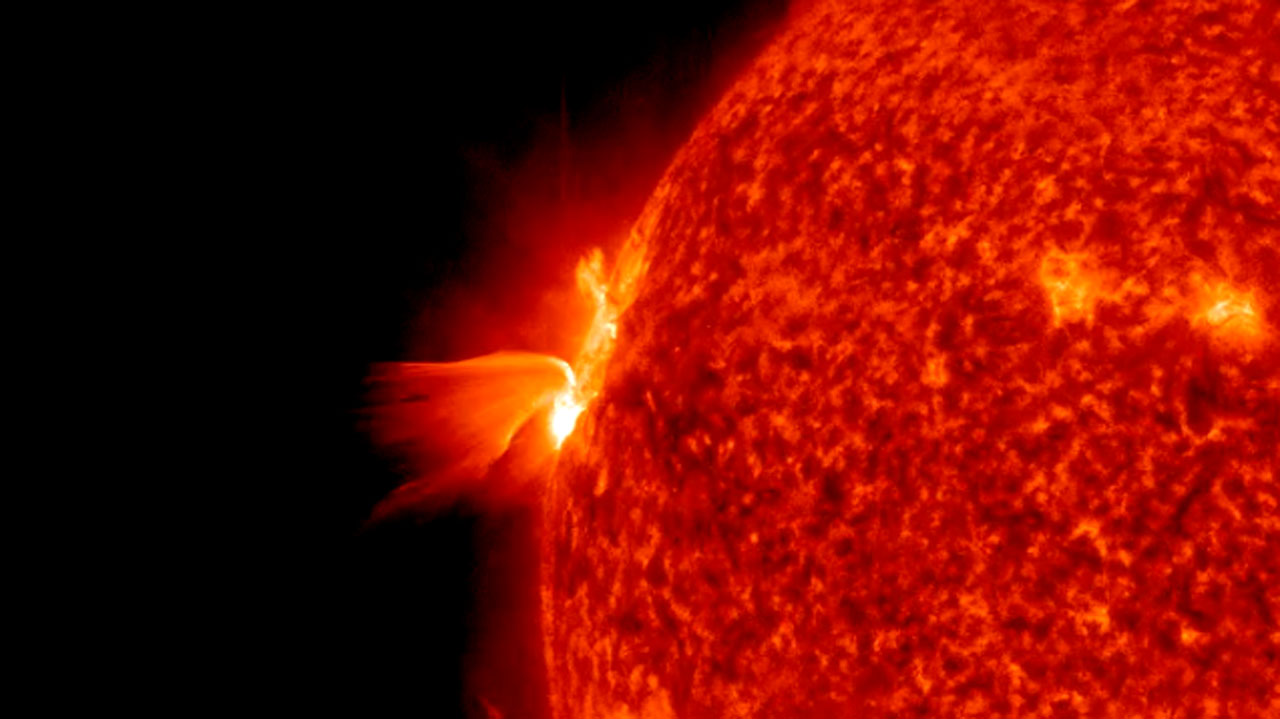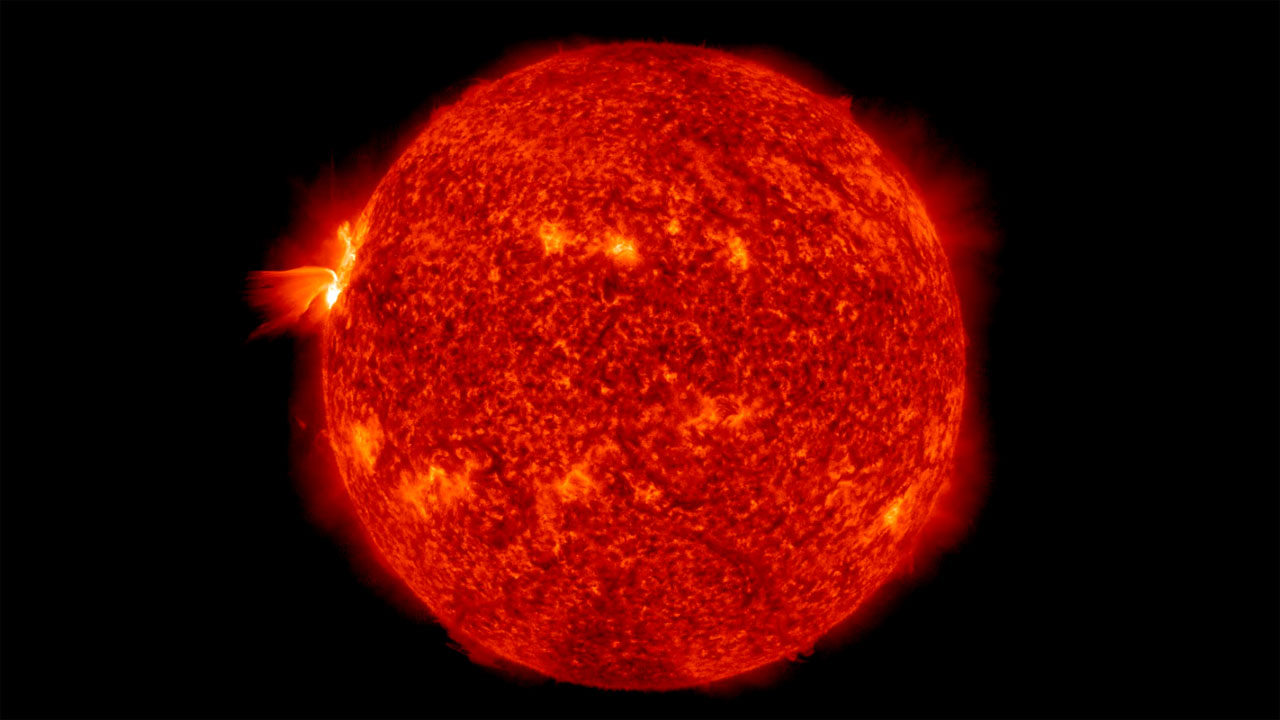Huge explosion on sun unleashes major solar flare on Easter
The eruption registered as an X1.1-class flare.
The sun unleashed a major solar flare over the Easter holiday weekend, sparking radio blackouts and setting the stage for more solar storms to come.
The Easter solar flare peaked late Saturday (April 16) at 11:34 p.m. EDT (0334 GMT on April 17) and was followed minutes later by a massive sun eruption known as a coronal mass ejection, according to the U.S. Space Weather Prediction Center (SWPC), which is overseen by the National Oceanic and Atmospheric Administration. The flare registered as an X1.1-class sun storm (X-class storms are the most powerful ones on the sun) and lasted about 34 minutes, SWPC officials said.
The flare originated from Regions 2994 and 2993, a cluster of active sunspots that has seen "significant flaring" since it appeared on the eastern limb of the sun, according to the SWPC.
"Solar activity is expected to be active over the next week as these sunspots migrate across the visible disk," the agency wrote in an update.
The sun's wrath: Worst solar storms in history

According to the SWPC, the Easter solar flare spawned a brief radio blackout and was classified as a Type II solar radio burst.
"Such bursts are produced by shock waves in the leading edges of CMEs," astronomer Tony Phillips of Spaceweather.com wrote in an update. Because the eruption occurred at the very eastern limb of the sun, the coronal mass ejection it spawned is likely not directed at Earth, Phillips wrote.

X-class solar flares are the strongest types of storms on the sun. The weakest sun flares are A-class; B- and C-class storms are also relatively moderate. More powerful M-class storms and above can supercharge the Earth's northern lights displays while the strongest X-class storms can pose a risk to satellites and astronauts in orbit when aimed directly at Earth.
Get the Space.com Newsletter
Breaking space news, the latest updates on rocket launches, skywatching events and more!
The Easter weekend solar flares come on the heels of an X1.3-class solar storm on March 30 and several C-class and M-class flares from different sunspot regions in recent weeks.
The sun is currently in an increasingly active phase of its 11-year solar weather cycle (the current cycle is known as Solar Cycle 25 and began in 2019). NASA, the SWPC and other solar scientists keep track of space weather from the sun with a series of spacecraft like NASA's Solar Dynamics Orbiter, the NASA-European Solar and Heliospheric Observatory (SOHO) among others.
Email Tariq Malik at tmalik@space.com or follow him @tariqjmalik. Follow us @Spacedotcom, Facebook and Instagram.
Join our Space Forums to keep talking space on the latest missions, night sky and more! And if you have a news tip, correction or comment, let us know at: community@space.com.

Tariq is the Editor-in-Chief of Space.com and joined the team in 2001, first as an intern and staff writer, and later as an editor. He covers human spaceflight, exploration and space science, as well as skywatching and entertainment. He became Space.com's Managing Editor in 2009 and Editor-in-Chief in 2019. Before joining Space.com, Tariq was a staff reporter for The Los Angeles Times covering education and city beats in La Habra, Fullerton and Huntington Beach. In October 2022, Tariq received the Harry Kolcum Award for excellence in space reporting from the National Space Club Florida Committee. He is also an Eagle Scout (yes, he has the Space Exploration merit badge) and went to Space Camp four times as a kid and a fifth time as an adult. He has journalism degrees from the University of Southern California and New York University. You can find Tariq at Space.com and as the co-host to the This Week In Space podcast with space historian Rod Pyle on the TWiT network. To see his latest project, you can follow Tariq on Twitter @tariqjmalik.









